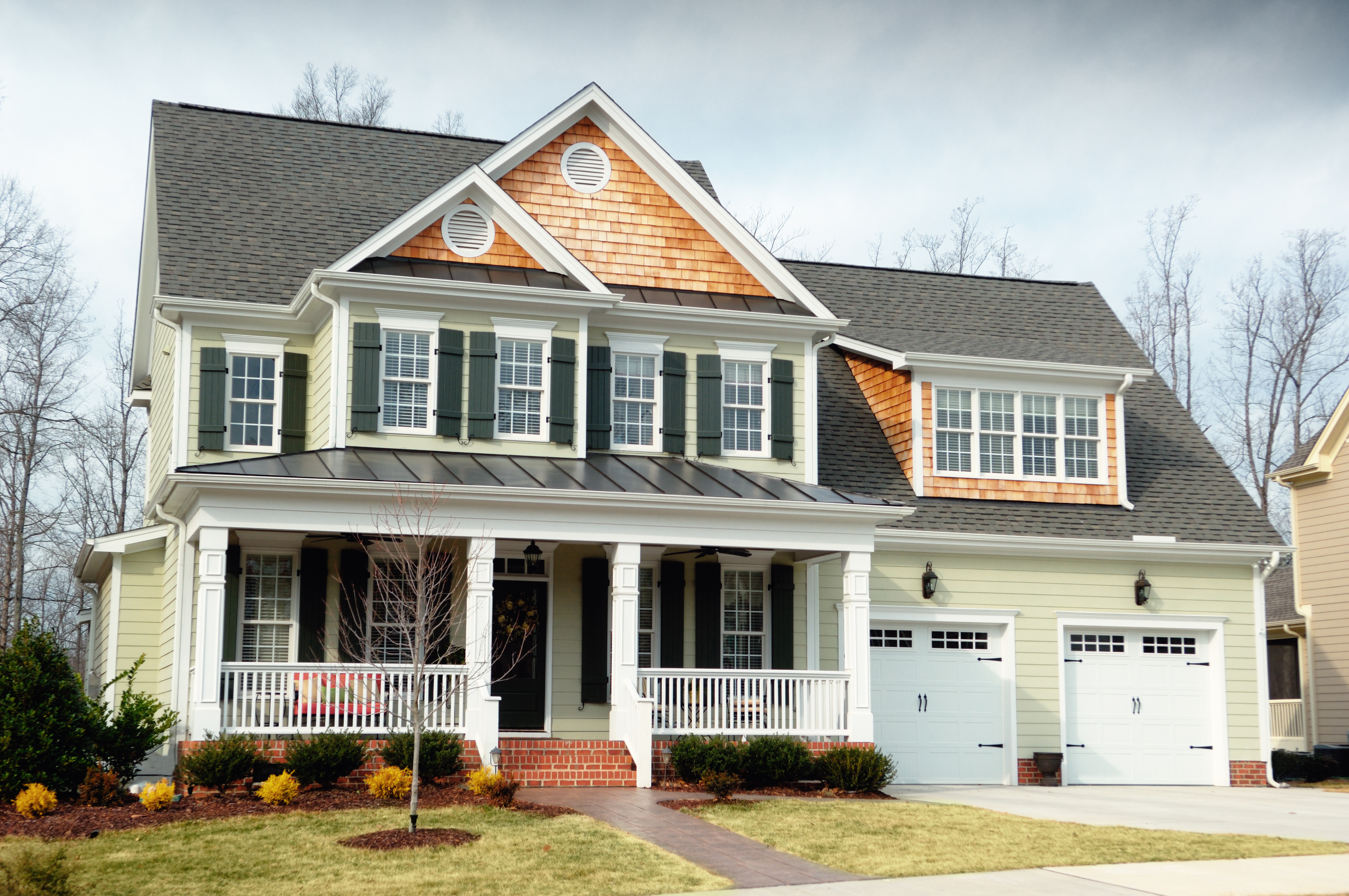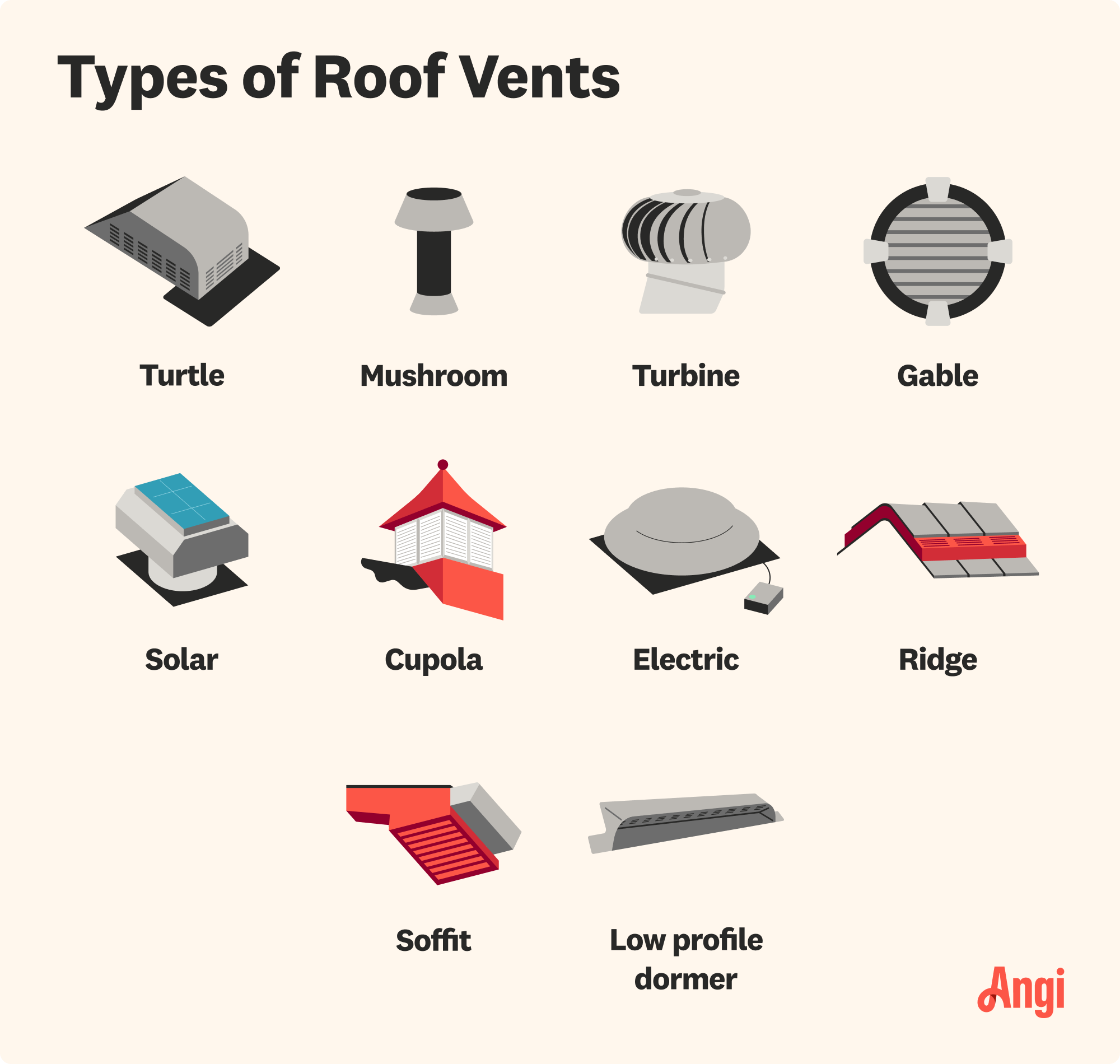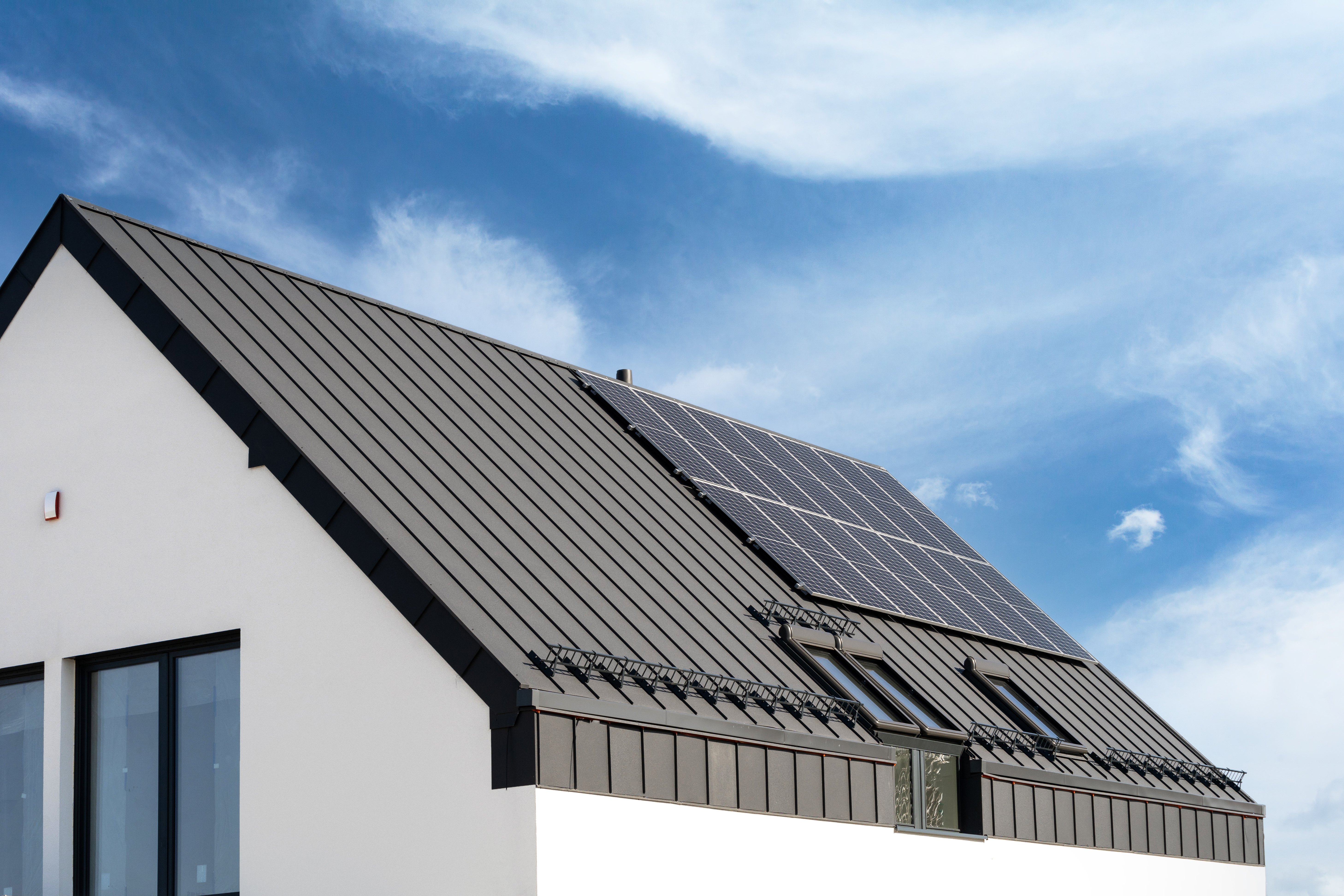
Dealing with a visibly damaged roof or leak? Learn about roof repair costs in Columbus to see how much you’ll need to budget for a permanent solution.
Your roof should thank you for your soffit’s hard work
A soffit vent goes under the eaves of the roof to ventilate the attic.
These vents reduce energy consumption and increase a roof’s lifespan.
They are vulnerable to animals and may damage roofs.
The four main types are individual, continuous, perforated, and circular.
At any given moment, unseen forces like moisture, mold, and animals are hard at work, trying to destroy your home from within. Soffit vents are part of your home’s defenses against these harmful intruders. The vents protect the interior of your roof and attic, which are often out of sight and, therefore, out of mind. Here is how soffits work to keep your home free from moisture damage.
A soffit vent is a device that is installed beneath the eaves of a roof that allows fresh air to circulate under the roof. These vents are visible on the underside of the eaves. They create a continuous flow of fresh air throughout the roof and attic, which protects against moisture accumulation.
Eaves are the part of the roof that extends past the roof’s edge and hangs over the ground. Soffits are vents installed within these eaves to allow airflow, and that is why they are known as under eave soffit vents.
The fascia is the board that runs along the side of the overhang, facing away from the house, and is typically there for aesthetic purposes. It is essentially a trim, although it does provide some support to the shingles.
Soffit vents preserve energy, lengthen a roof’s lifespan, and prevent moisture problems like mold and mildew.
A good, consistent flow of fresh air throughout the roof and attic will prevent heat from escaping the home. This helps the air conditioning and heating units to work less, which means you will reduce energy consumption and lower your energy bill.
Poor attic ventilation is one of the biggest reasons a homeowner might need to replace their roof prematurely. Proper ventilation will increase the lifespan of your roof by ensuring the attic is getting the fresh air it needs to prevent moisture buildup.
While it may seem strange that allowing cold air in the winter into your attic can improve insulation, the fact is that this fresh air helps to ventilate moisture created in the interior of the home from activities like heating and showering and all of the other things people do. The air circulation starves toxic black mold of moisture. This process helps remove moisture in the summer as well, moving hot air out of the attic.
Soffit vents are a necessity, but be aware that they do not always hold up well against animals and the elements. They require occasional checks to make sure the vents are not blocked and that animals have not taken up residence.
Raccoons, bats, and other types of critters can tear off the soffit screens to get into your attic, so you should inspect them regularly for damage. The cost to repair a soffit ranges from $600 to $6,000.
Because moist air can collect under soffits, it risks damaging your roof, as well as any siding in the general vicinity over time. Watch for signs of damage and contact a professional if you are concerned about moist air buildup.
Soffit vents are intake vents, which means that, if they are positioned near an exhaust vent, they may suck moisture into your attic and cause damage.
Some older homes have soffit coverings underneath the eaves, but they are installed directly over wood and there is no actual vent there. You can determine if this is the case by removing the panel to see. If there is no true vent, choose a soffit repair contractor to convert them into vents.
There are four main types of soffit vents—individual, continuous, perforated, and circular.
This is probably the most common type of soffit vent. It fits between joists under your eaves. It is called an individual vent because it is just one vent all by itself, perhaps with a gap separating it from other individual vents.
A continuous vent runs along the entire underside of the eaves to maximize the amount of air getting pulled in.
These vents are simply perforated vinyl siding that resemble regular vinyl siding, except with tiny holes. They are particularly good for keeping animals out.
These vents are less common because they do not work as well as other types of soffit vents. Because of their circular shape, they may look like lights installed underneath the eaves, but they are vents.
It is possible to have too much soffit ventilation. Soffit vents are intake vents, so they need to be balanced out by exhaust vents. If your home is seriously out of balance between soffit and exhaust vents, the soffit vents could be allowing moisture buildup.
It costs between $315 and $465 on average to install soffit vents. Generally, that works out to between $3.30 and $4.50 per linear foot. A continuous soffit vent would cost $8 to $10 per square foot. Contact a roofing professional near you for an estimate.
The best way to figure out if your soffit vents are working is to climb into your attic and inspect them from the inside. These vents can get blocked by insulation, which may result in severe mold buildup. Check each vent to ensure clear airflow.
Other signs that soffit vents are not working properly could include signs of black mold or darkened, water-stained wood. If air is not circulating correctly, you may see areas of frost or feel pockets of warmth in the attic. Additionally, rusty nail heads could indicate that metal surfaces are collecting moisture.
Soffits are not the only type of roof vent to ventilate and prolong the health of your roof. Many of the following vents can be used with soffits or in place of them to improve air circulation.

These vents are installed in the wall as close as possible to the highest point of the house, near the peak of the gable. They are excellent at allowing heat to escape; however, they do not draw air out or in. Consequently, this passive form of ventilation requires another source of ventilation to move air actively.
Static or eyebrow vents require cutting holes in the face of the roof and covering them with a vent collar. The collars protect the ventilation hole and keep out animals. Like gable vents, these do not pull air in or out, so they should be used with an active source of ventilation.
Rectangular roof vents, also called box vents, are installed directly into the roof about 15 inches from the peak. They require making a hole in the roof and work best on pyramid or hip roofs with short ridge lines. Certain types of roofing, like tile, cedar, metal, or slate, may require special installation methods.
Ridge vents run along the ridge line and are covered by a ridge cap, hiding the vents from view. This type of vent allows heat to escape through the ridge. There is less risk of damaging a roof with this type of vent because you are less likely to disturb or damage shingles. Ridge vent costs are relatively low for the amount of ventilation they offer.
Starter vents, sometimes called drip edge vents, work for roofs with little or no overhang. Installation requires removing a few rows of shingles, cutting back the leading edge of the roof sheathing, and trimming the top edge of the fascia.
A flash filter vent allows for circulation in homes where a roof meets a wall. These vents require creating or cutting a slot in the roof where it meets the wall. The slot is then covered by the flash filter vent with a flange that fits tightly against the wall. The vent cover prevents rainwater from entering through the vent.
These vents work well for roofs with minimal overhang. They create more space for ventilation than other designs, so they are a good option for small spaces that lack a secondary ventilation system. They can be used for large attics as well. Their under-shingle design also protects them from rain and snow.
Homes located where winds are consistently around five miles per hour or more can add a wind turbine to the roof. These circular devices are placed at the gable and can act as both an exhaust and intake fan. They are also highly energy efficient because they are run by wind power.
House fans are a good option for homes where other methods do not work or provide insufficient ventilation. A house fan requires electricity, so it is not the most energy efficient, but it does a good job of pushing air out of a house and drawing air in through passive ventilation devices.
Most shingle warranties require adequate roof ventilation to remain valid, and some may specifically require soffit vents. Without proper ventilation, heat coming from underneath the shingles can degrade the shingle structure or promote moisture buildup. Consequently, ventilation that allows heat to escape can help maintain and extend the shingles’ life.
The process of installing soffit vents basically involves cutting a space in the soffit and installing the vent over the space to protect the attic from animals and inclement weather. The process looks something like this:
Measure the soffit vent.
Measure the soffit to find the center and draw two lines the length of the soffit vent, with each being one inch to either side of the center. This should create about a two-inch space between the lines.
Use a drill with a paddle bit to create a hole within the area of the soffit that you are going to cut out.
Use a circular saw set to a depth that just cuts through the soffit material to cut along the two parallel lines.
Connect the two lines using a jigsaw or sharp chisel.
Remove the soffit material with a pry bar or similar tool.
Remove any nails and insulation.
If the vent does not already have screw holes, create holes about 12 to 14 inches apart in the flanges on both sides of the vent.
Line the vent up over the hole.
Attach the vent to the soffit using screws and a cordless drill.
From the inside of the attic, remove any remaining insulation that could potentially block the vent.
Soffit venting is not a challenging project, but it takes time and requires working overhead. You may need to consult local building codes to ensure you have enough soffit vents installed for the size of your roof and attic. A local roof repair company will know the local building codes and can offer an estimate if you are not up to the project yourself.
From average costs to expert advice, get all the answers you need to get your job done.

Dealing with a visibly damaged roof or leak? Learn about roof repair costs in Columbus to see how much you’ll need to budget for a permanent solution.

Learn about roof replacement costs in Columbus and what factors are at play to budget accurately and make sure you’re getting a fair price.

A metal roof can defend your home against Ohio’s varying weather conditions. Learn how much a metal roof costs in Columbus, OH.

An attic without proper ventilation can cause a number of roofing problems, inside and out. Here’s how you can tell if a poorly ventilated attic is wrecking your roof.

Shingles that are losing their granules may not be protecting your roof. Learn why shingle granule loss happens and what it means for your roof.

Architectural shingles come in a variety of colors and styles and are a durable way for homeowners to recreate some of their favorite roofing looks.